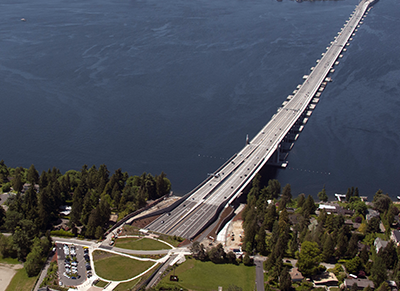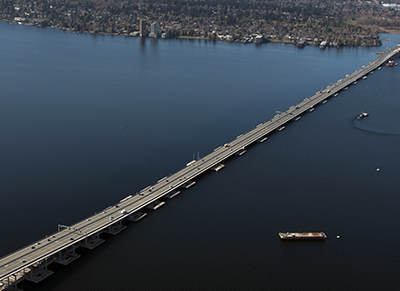RESOURCES
Links to external websites do not constitute endorsement by WSDOT of the linked websites or the opinions, information, products or services contained therein.
A
key focus of the SR 520 Bridge Replacement and HOV Program is sustainability in design and construction. The SR 520 Program is the first highway project in Washington state history to implement measurable sustainability criteria across an entire corridor. These criteria seek to improve the environmental, social, and economic welfare of communities affected by construction and operation of public infrastructure. The following are some examples of how WSDOT has worked to integrate sustainable practices into corridor design and construction to benefit the surrounding community, in particular its historic and cultural resources.
- The corridor's design enhances connectivity by improving connections between communities, increasing transit and HOV access, and improving access to public open space, bicycle and pedestrian facilities. Specific examples of how we’re increasing connectivity including building lids connecting communities situated to the north and south of the corridor in the Montlake and Roanoke Park historic areas, which include:
- A 10th and Delmar lid that supports passive uses as well as bicycle and pedestrian shared-use paths; balances tree preservation and safe public spaces by blending the lid into the hillside.
- A Montlake lid that integrates transit, bicycle and pedestrian facilities, includes safe connections to and from the lid, provides space for active uses and green space in an urban environment, and relates to the Washington Park Arboretum.
- Develop the Olmstedian vision of connected parks and greenways.
- Complete the regional shared use path from the Eastside to Montlake and beyond, once the final build-out is complete.
Working with community members and stakeholders, we have explored innovative ways to reduce project effects by diminishing infrastructure impacts on the natural environment and reducing construction-related noise and pollution. Some specific examples of ways we’re reducing impacts include:
- Design refinements to the West Approach Bridge that reduce concrete volumes by nearly 40 percent, improve views, reduce environmental impacts and in-water construction, and help minimize the hauling of materials on local streets.
- Maximize use of locally sourced materials, which helps the regional economy, reduces transportation-generated greenhouse gases and pollution, and helps minimize the hauling of materials on local streets.

